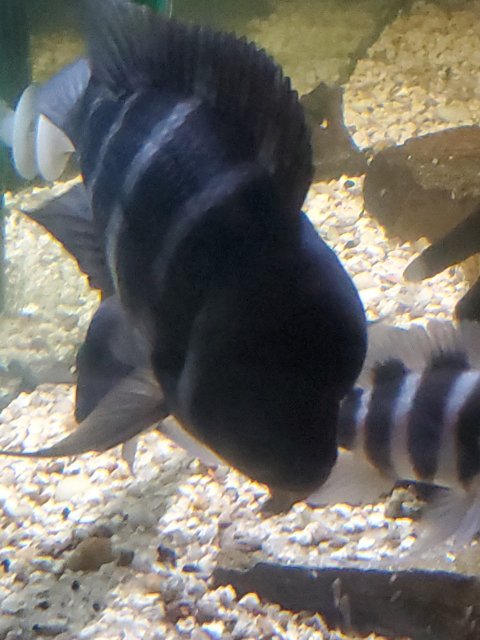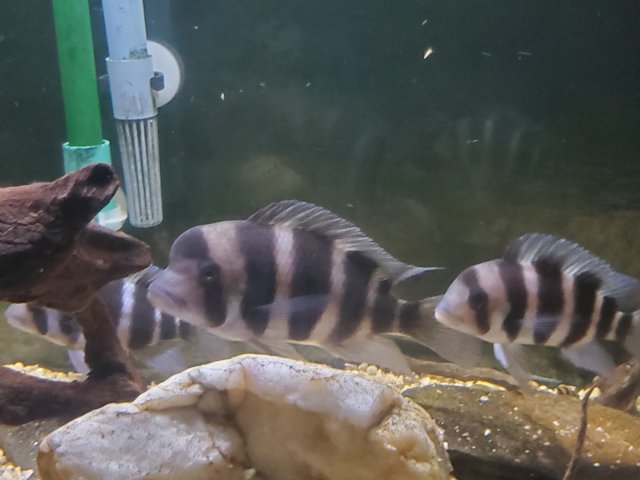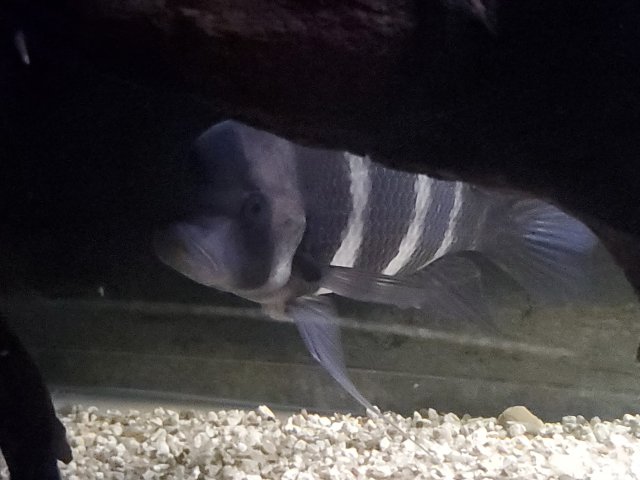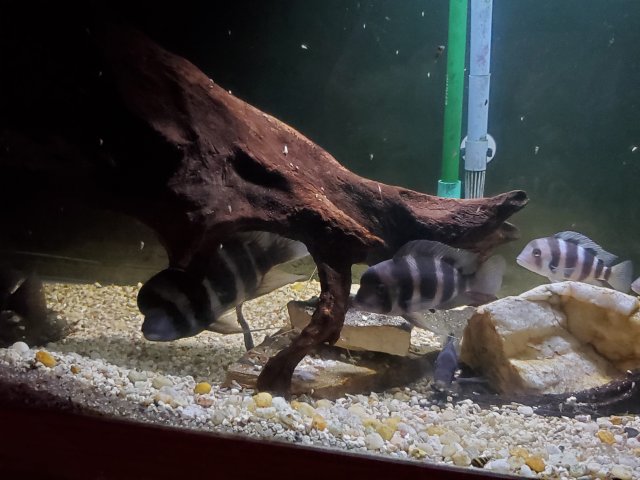My babies have grown into teenagers!
- Thread starter JAYBIRD1011
- Start date
Frontosa, truly one of the slow growing fish in the trade, it is impressive you kept them for this long, I congratulate you on this, i now look forward to hearing about them in another 2 years.
Hopefully I can stay a little more active. But yes, I still have the same six I started with. My biggest surprise is the different growth rates from fish to fish. They were all the same size. One is over eight inches. The next largest is about six,and The other 4 are 3 to 4 inches.
From my uneducated opinion it would seem as thought the biggest one is the dominant male and the second biggest is the dominant female and the rest are the betas. However that’s just an uneducated guess as I’ve never kept this species before.
I've had the same thoughts. I guess it just kind of surprised me that there was such a big difference.From my uneducated opinion it would seem as thought the biggest one is the dominant male and the second biggest is the dominant female and the rest are the betas. However that’s just an uneducated guess as I’ve never kept this species before.
Doesn't normally work that way with fronts ime and I've raised several groups over 20 years and done some breeding-- typically, growing out a spawn or decent sized group, the largest are males, the smallest are females and the in betweeners can go either way. Results might be a little different in a small group with skewed male/female ratios, otherwise it's consistent ime.
Also, for me at least some males in the group reach 6 or more inches in a year, smaller females 4-4.5 inches, and then like I say you get the in betweeners. Second year another couple of inches, 3rd another inch or two, then growth slows and after about 5 years, if they've grown at this pace, it slows down more (usually). For some people they grow slower in their first couple of years. One of mine is now nearly 16 years old, since year five he's gone from about 11" to just over 12"
Also, for me at least some males in the group reach 6 or more inches in a year, smaller females 4-4.5 inches, and then like I say you get the in betweeners. Second year another couple of inches, 3rd another inch or two, then growth slows and after about 5 years, if they've grown at this pace, it slows down more (usually). For some people they grow slower in their first couple of years. One of mine is now nearly 16 years old, since year five he's gone from about 11" to just over 12"
Thank you! That's actually quite helpful. I have 6. Do you think I would have a better chance of breeding if I got rid of 3 or 4? I haven't noticed any pairing off or anything, but they're 2 yrs. now, so they may not be ready yet from what I've been told.Doesn't normally work that way with fronts ime and I've raised several groups over 20 years and done some breeding-- typically, growing out a spawn or decent sized group, the largest are males, the smallest are females and the in betweeners can go either way. Results might be a little different in a small group with skewed male/female ratios, otherwise it's consistent ime.
Also, for me at least some males in the group reach 6 or more inches in a year, smaller females 4-4.5 inches, and then like I say you get the in betweeners. Second year another couple of inches, 3rd another inch or two, then growth slows and after about 5 years, if they've grown at this pace, it slows down more (usually). For some people they grow slower in their first couple of years. One of mine is now nearly 16 years old, since year five he's gone from about 11" to just over 12"
Frontosa don't pair off-- except to actually spawn, but they don't bond as pairs. They're often called harem breeders, typical and best way to breed them is multiple females for an "alpha" male. They're among the more variable cichlids in personality and can be temperamental to breed, so you're looking for the best combination of individuals more than an exact formula. Sometimes it takes some tinkering with a group. I've had trios: 1 male/2 females, 3 or more females, one or more males, etc. Every group can be different. Quite often a lot depends on the alpha male-- does he tolerate another male, is he gentle or rough on females, is he motivated or lackadaisical about spawning, does another male motivate him or distract him? Sometimes the original alpha isn't best, too mean, too lazy, etc. and you have to replace him with a different male.Thank you! That's actually quite helpful. I have 6. Do you think I would have a better chance of breeding if I got rid of 3 or 4? I haven't noticed any pairing off or anything, but they're 2 yrs. now, so they may not be ready yet from what I've been told.
All that said-- some females begin producing eggs as early as 18 months or so. Typical males aren't mature enough to produce fry until about 3 years, some longer.
They can be challenging to breed, but that said, one group can drive you nuts trying to breed them and another might breed like clockwork. They're among the most individually variable fish I've kept.









